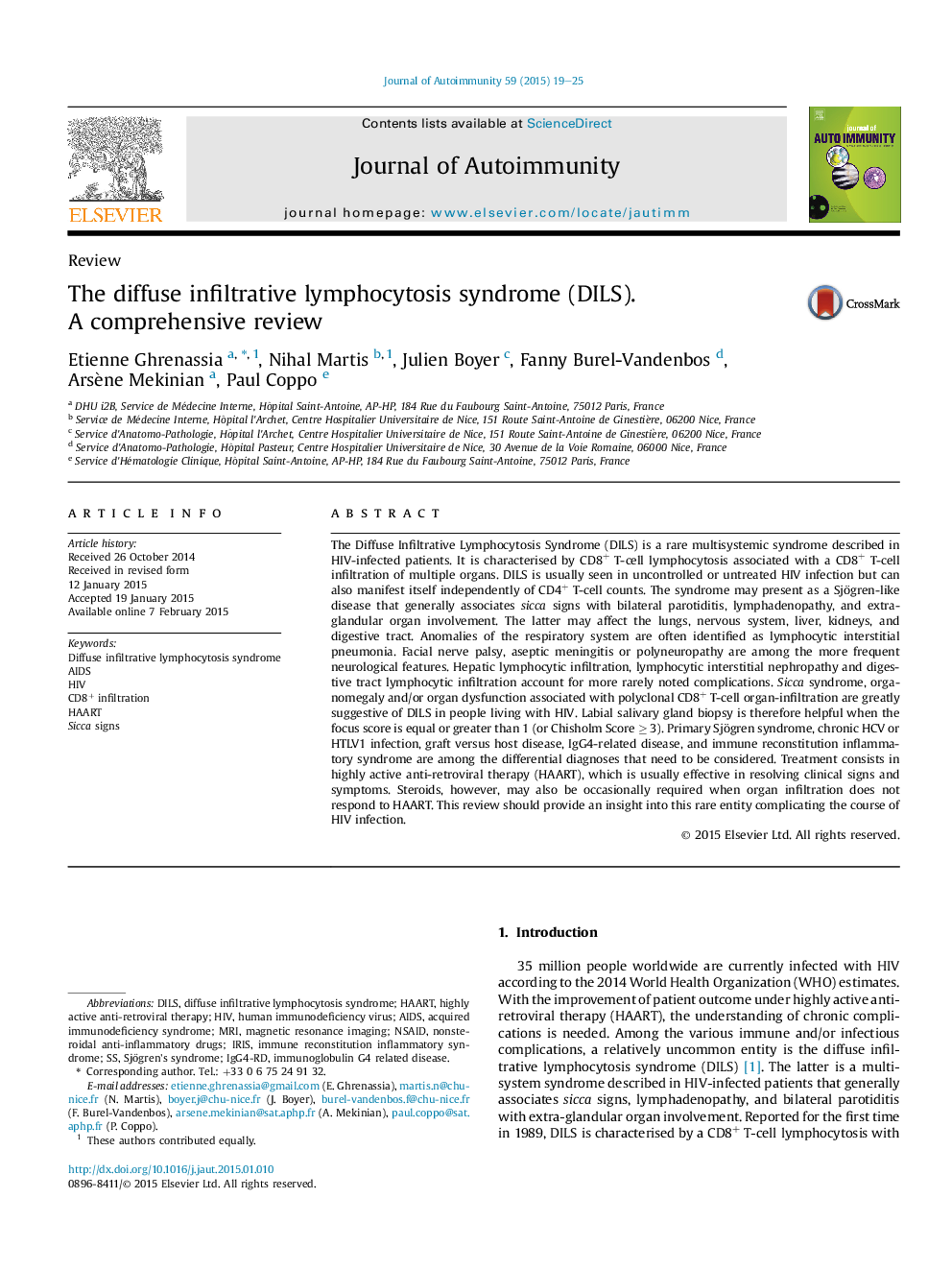| Article ID | Journal | Published Year | Pages | File Type |
|---|---|---|---|---|
| 3367720 | Journal of Autoimmunity | 2015 | 7 Pages |
•Diffuse infiltrative lymphocytosis syndrome is a rare and relatively unknown multisystem disorder complicating HIV.•Clinical features include sicca signs, salivary gland-enlargement, lymphocytic interstitial pneumonia and lymphadenopathy, though other organs may also be involved.•It is associated with polyclonal CD8+ T-cell lymphocytosis and polyclonal CD8+ T-cell organ-infiltration.•Labial salivary gland biopsy often shows a focus score >1 (similar to Sjögren's syndrome).•DILS may respond to antiretroviral therapy alone but steroids are required in case of severe involvement or unresponsiveness.
The Diffuse Infiltrative Lymphocytosis Syndrome (DILS) is a rare multisystemic syndrome described in HIV-infected patients. It is characterised by CD8+ T-cell lymphocytosis associated with a CD8+ T-cell infiltration of multiple organs. DILS is usually seen in uncontrolled or untreated HIV infection but can also manifest itself independently of CD4+ T-cell counts. The syndrome may present as a Sjögren-like disease that generally associates sicca signs with bilateral parotiditis, lymphadenopathy, and extraglandular organ involvement. The latter may affect the lungs, nervous system, liver, kidneys, and digestive tract. Anomalies of the respiratory system are often identified as lymphocytic interstitial pneumonia. Facial nerve palsy, aseptic meningitis or polyneuropathy are among the more frequent neurological features. Hepatic lymphocytic infiltration, lymphocytic interstitial nephropathy and digestive tract lymphocytic infiltration account for more rarely noted complications. Sicca syndrome, organomegaly and/or organ dysfunction associated with polyclonal CD8+ T-cell organ-infiltration are greatly suggestive of DILS in people living with HIV. Labial salivary gland biopsy is therefore helpful when the focus score is equal or greater than 1 (or Chisholm Score ≥ 3). Primary Sjögren syndrome, chronic HCV or HTLV1 infection, graft versus host disease, IgG4-related disease, and immune reconstitution inflammatory syndrome are among the differential diagnoses that need to be considered. Treatment consists in highly active anti-retroviral therapy (HAART), which is usually effective in resolving clinical signs and symptoms. Steroids, however, may also be occasionally required when organ infiltration does not respond to HAART. This review should provide an insight into this rare entity complicating the course of HIV infection.
